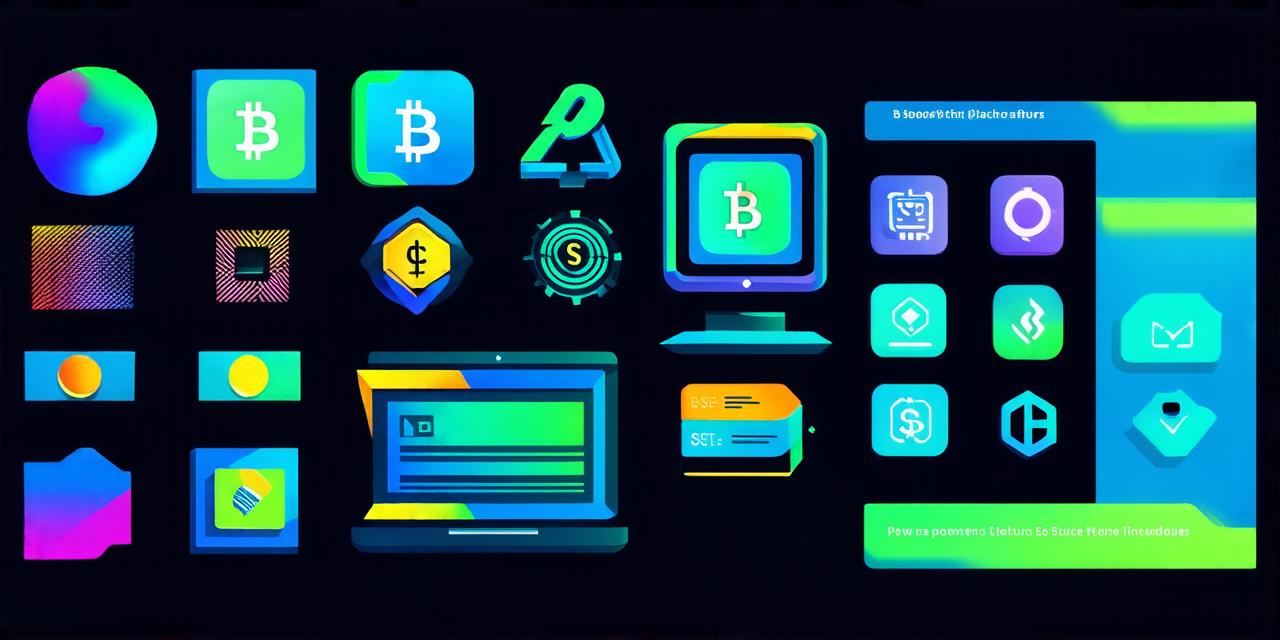Introduction
Blockchain is a distributed ledger technology that allows for secure and transparent record keeping.
It was first introduced in 2008 with the creation of Bitcoin, but it has since been adopted by numerous industries to solve a variety of problems. If you’re interested in learning more about blockchain, this guide will provide you with an overview of the technology, its benefits, and how it works.

What is Blockchain?
Blockchain is a decentralized system that enables secure and transparent record keeping without the need for intermediaries. It consists of a chain of blocks that contain information about transactions. Each block in the chain contains a unique cryptographic hash, which links it to the previous block.
The Benefits of Blockchain
Blockchain technology offers numerous benefits, including:
- Decentralization: Blockchain is a decentralized system that does not rely on any central authority or intermediary to function. This eliminates the need for trust between parties and reduces the risk of fraud and corruption.
- Security: The use of cryptographic hashes and consensus algorithms ensures that data stored on a blockchain is secure and cannot be altered.
- Transparency: All transactions on a blockchain are publicly visible and can be verified by anyone with access to the network. This creates a high level of transparency and accountability.
- Efficiency: Blockchain technology enables faster and more efficient record keeping by eliminating intermediaries and automating processes.
How Does Blockchain Work?
Blockchain works through the use of consensus algorithms and cryptographic hashes. When new data is added to a block, it is verified by a network of nodes, which work together to confirm the validity of the transaction. Once a transaction is confirmed, it is added to the block and cryptographically secured with a unique hash. This process creates an immutable and tamper-proof record that can be easily shared and verified by anyone on the network.
Real-life Examples of Blockchain in Action
Blockchain technology has been adopted by numerous industries to solve a variety of problems. Here are some real-life examples of blockchain in action:
- Bitcoin: The first and most well-known application of blockchain technology, Bitcoin is a decentralized digital currency that enables peer-to-peer transactions without the need for intermediaries.
- Ethereum: Ethereum is a decentralized platform that enables developers to build and deploy smart contracts and dApps. Smart contracts are self-executing programs that automatically enforce the terms of an agreement, while dApps are decentralized applications that run on the Ethereum network.
- IBM Food Trust: IBM Food Trust is a blockchain-based platform that enables food companies to track and trace the origin and movement of food products in real-time. This improves supply chain transparency and reduces food waste.
- MediLedger: MediLedger is a blockchain-based system that enables pharmaceutical manufacturers to track and verify the authenticity of their products. This helps prevent counterfeit drugs from entering the supply chain and causing harm to patients.
How to Get Started with Blockchain Development
If you’re interested in learning more about blockchain development, here are some steps you can take:
- Familiarize yourself with the basics of blockchain technology, including how it works and its benefits.
- Learn a programming language that is commonly used for blockchain development, such as Solidity or Vyper.
- Experiment with blockchain development platforms and tools, such as Truffle or Remix, to build simple smart contracts and dApps.
- Join online communities and forums where developers share knowledge and best practices.
- Stay up-to-date on the latest developments in blockchain technology by reading industry news and attending conferences and workshops.
FAQs
1. What is blockchain?
Blockchain is a decentralized system that enables secure and transparent record keeping without the need for intermediaries. It consists of a chain of blocks that contain information about transactions.
2. What are the benefits of blockchain?
Decentralization, security, transparency, efficiency.
3. How does blockchain work?
Blockchain works through the use of consensus algorithms and cryptographic hashes. When new data is added to a block, it is verified by a network of nodes, which work together to confirm the validity of the transaction. Once a transaction is confirmed, it is added to the block and cryptographically secured with a unique hash. This process creates an immutable and tamper-proof record that can be easily shared and verified by anyone on the network.
4. What are some real-life examples of blockchain in action?
Bitcoin, Ethereum, IBM Food Trust, MediLedger.
5. How can I get started with blockchain development?
Familiarize yourself with the basics of blockchain technology, learn a programming language commonly used for blockchain development, experiment with blockchain development platforms and tools, join online communities, and stay up-to-date on the latest developments in blockchain technology.
